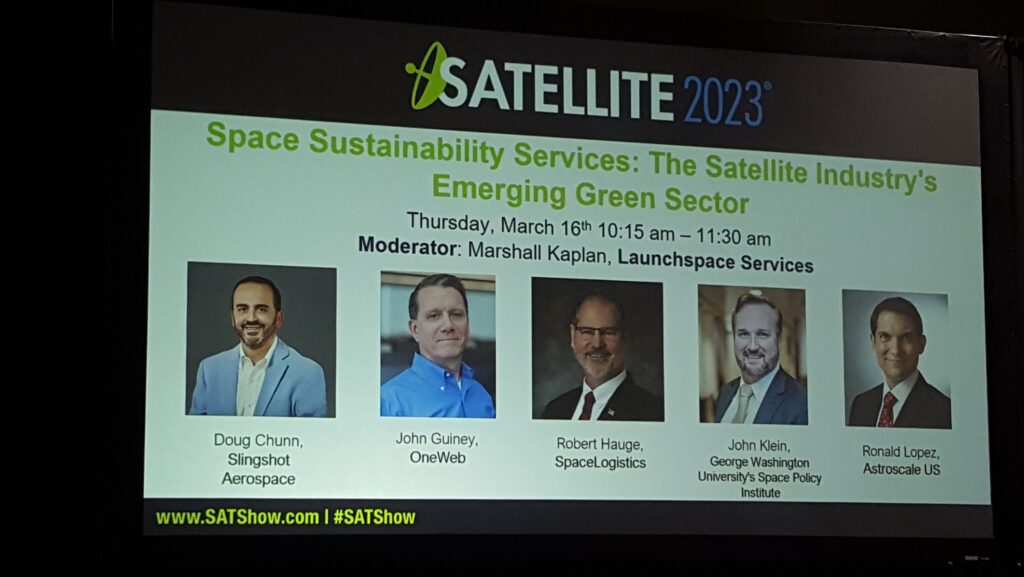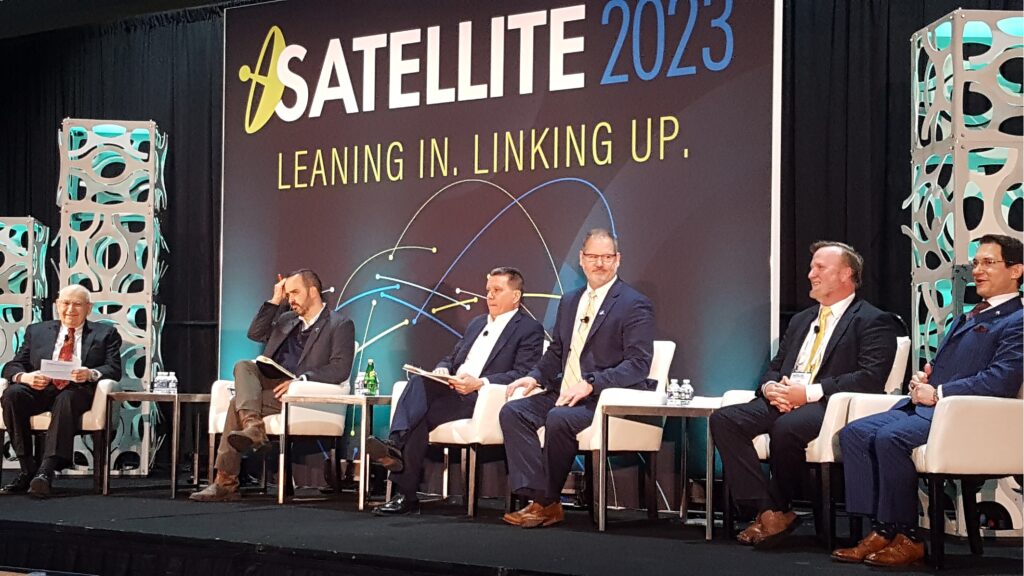During the last session of the SATELLITE 2023 conference in Washington DC was the Space Sustainability Services panel. This saw representatives from Slingshot Aerospace, OneWeb, SpaceLogistics, Astroscale, and George Washington University, discuss the different approaches towards ensuring the Earth’s orbit remains a usable resource for the future.

Representing one of the largest users of low Earth orbit was OneWeb SVP, John Guiney. He spoke about the actions OneWeb have taken to be a good steward of LEO and outlined how other organisations could follow his lead and operate responsibly. OneWeb, like SpaceX, follows a practice of evaluating their LEO satellites in a orbit lower than that intended for operations. This ensures that if any of its satellites are deemed to have issues that could later lead to more debris being made or a disruption of its orbit they can be de-orbited promptly and responsibly. Additionally, OneWeb has installed docking handles on all of its satellites just in case, and is working with fellow panellist Astroscale on a Active Debris Removal (ADR) showcase mission.
The Slingshot Aerospace VP, Sales, Doug Chunn, spoke about the importance of good space traffic management as a way to prevent more debris being formed. However, for this to work properly co-ordination is required amongst global operators and not just friendly states/organisations. He also stated that increased investment in better software for space traffic management and conjunction data messages (CDMs) would be a big stepping stone towards future space sustainability.

The Space Sustainability panel, Photo by Matt Wilson
The two operators currently active in the in-orbit servicing market Astroscale and SpaceLogistics talked about how they saw this developing market. Astroscale mentioned that it was only through changes in the space economy e.g. lowering launch costs, that in-orbit servicing and debris removal were now possible businesses. It is developing its ELSA-M mission which is planned to conduct multiple de-orbiting manoeuvres for large debris pieces or retired satellites. It was pointed out that its current methodology only works for “large” pieces of debris and the removal of “small” (sub-10 cm) debris pieces required significantly more investment to make it cost efficient. SpaceLogistics is also primarily tackling “large” and current objects through its life extension service. This method contributes to space sustainability by reducing the need to launch new satellites (and therefore creating new pieces of debris), while also being a service that companies are happy to pay for. It hopes to expand its offering with the MRV and MEPs planned for launch in 2024. The MRV will be able to provide satellite servicing services to clients and the MEPs can extend the lives of more satellites than the currently in orbit MEVs.
The participants referenced however, that despite the identified pressing need for space sustainability services, this is still a emerging market and things need to improve to make it more sustainable for their own businesses. More investment from both commercial and governmental sources, on a international scale will be required. Additionally, reluctance in the insurance market for their new activities hampered by increasingly out-of-date norms of behaviour and legislation (read: the Outer Space Treaty) were also obstacles towards improved space sustainability.







